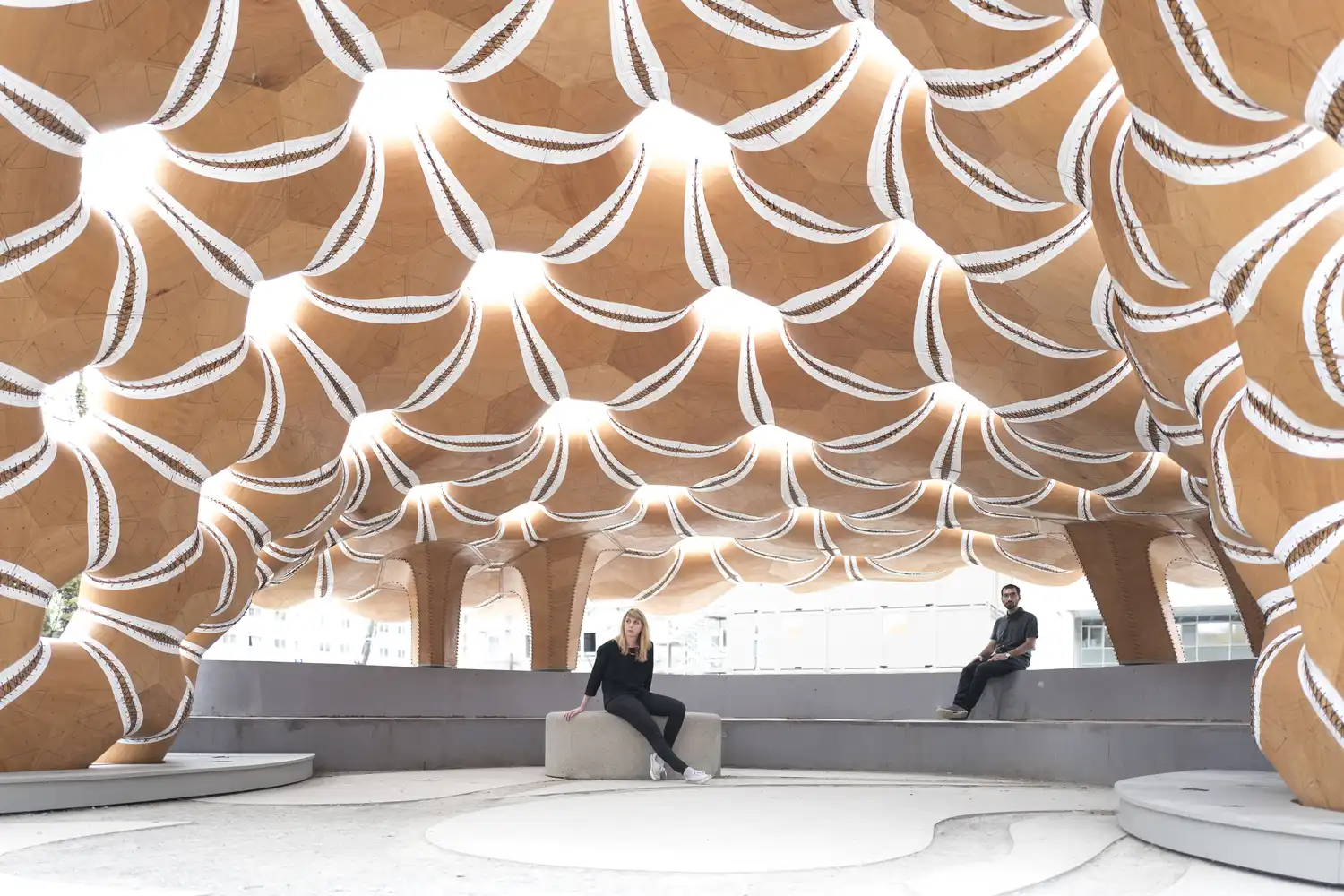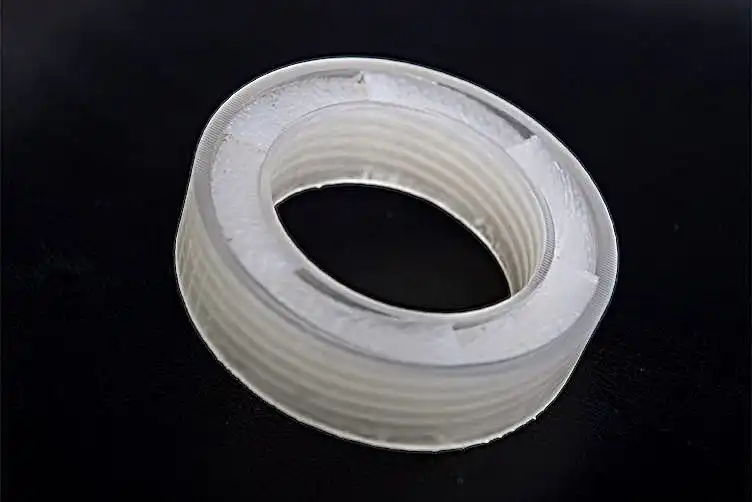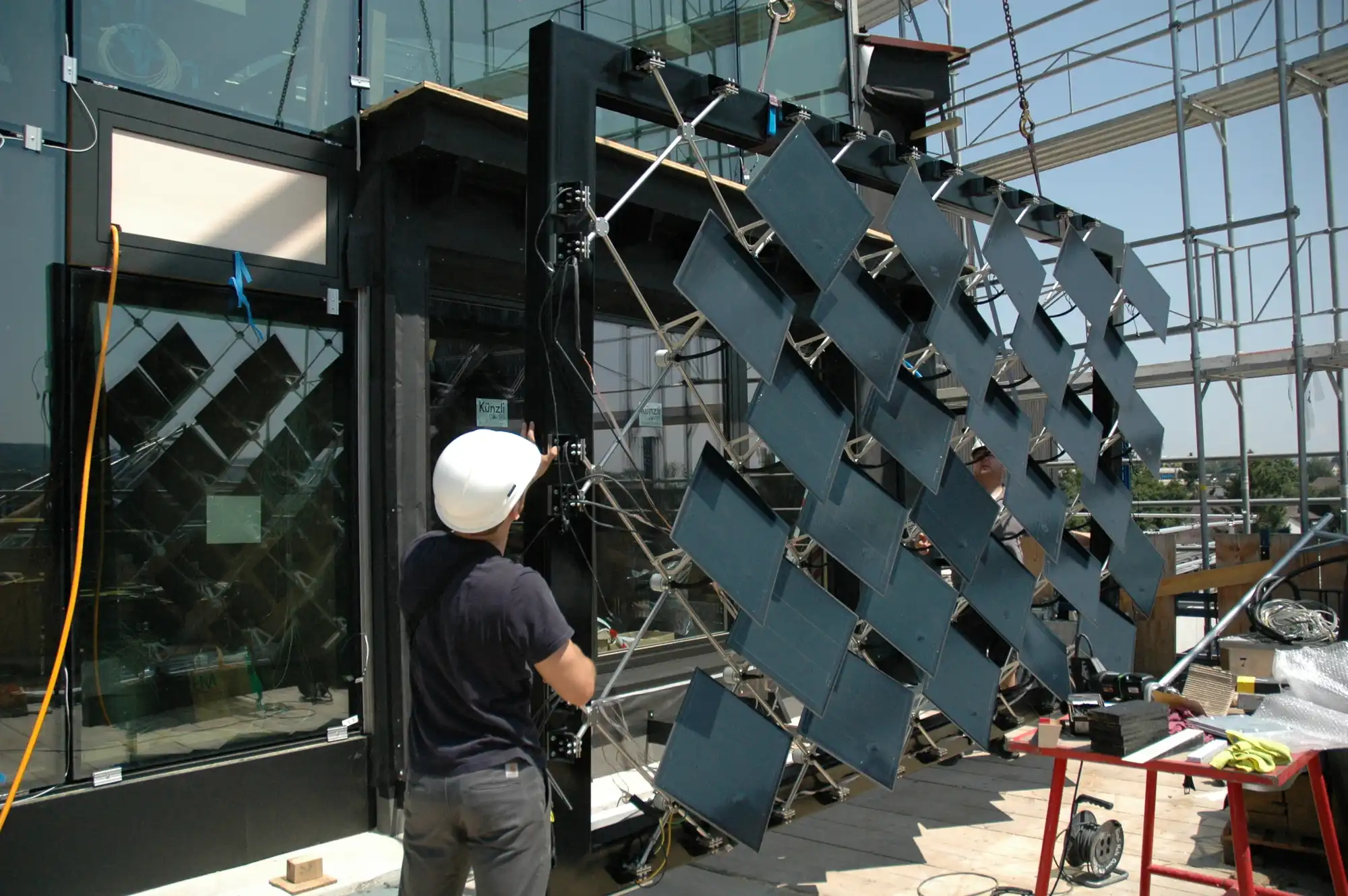
A new class of engineered materials is starting to transform the built world. These synthetic materials, referred to as metamaterials, have characteristics not present in the natural world. Metamaterials create completely new possibilities for how structures function, react, and engage with their environment by adjusting their interior geometry.

Historically, materials with inherent qualities have been used in architecture: glass transmits light, concrete provides mass, and steel provides strength. However, what occurs when materials are created for their potential rather than their inherent qualities?
By functioning at the micro- and nano-scale, where behavior is determined by structure and not substance, metamaterials defy accepted ideas. These substances have the ability to reroute heat in strange ways, bend light backward, and muffle sound. Their potential goes much beyond aesthetics; they may be used in areas like responsiveness, acoustics, and sustainability, all of which are vital to the performance of architecture in the future.
Acoustic design is among the most instantly applicable fields. A common problem in urban settings is controlling noise without compromising openness or transparency. Acoustic metamaterials provide a lightweight and aesthetically pleasing solution by blocking or attenuating sound waves.
Engineers at Boston University have developed an acoustic metamaterial that can cancel 94 percent of sound. The 3D-printed, mathematically engineered acoustic metamaterial is tailored to reflect incoming sounds back to their source. A helical pattern inside the outer ring disrupts sound waves, preventing them from passing through the open core while maintaining airflow.

Similarly, a new study by the MIT Department of Mechanical Engineering (MechE) presents a design framework for controlling ultrasound wave propagation in microscopic acoustic metamaterials. The researchers focused on cubic lattice with braces comprising a braced-cubic design.
The architectural implications are profound: barriers, walls, or facades could be rethought as acoustically selective surfaces that provide solidity-free silence.

This technology is useful in applications where sound isolation must be accomplished without increasing visual or structural weight, such as libraries, transportation hubs, or even residential buildings in crowded urban areas.

The use of thermal metamaterials is another intriguing application. Depending on the situation, these materials can steer heat by functioning as either conductors or insulators. Passive systems that circulate heat internally can optimize energy performance without adding mechanical complexity in buildings, especially in extreme climates.
In order to redirect heat away from areas that face the sun and toward cooler areas of the building, experimental projects are exploring wall panels that are embedded with heat-routing microstructures. Material-driven heat control may become a fundamental component of building performance as net-zero and climate-positive architecture establish themselves as the new standard.
With photonic metamaterials, light too becomes a programmable phenomenon. These constructions govern the way light interacts with a surface, giving buildings previously unheard-of control over how sunlight is filtered or redirected.
This idea is realized in experimental structures such as ETH Zurich's HiLo House. Microstructural features in the building's adaptable solar facade maximize natural light while reducing heat gain. In contrast to conventional shading devices, they are embedded responses, which are intelligent but invisible and respond to changes in the environment instantly.

Additionally, photonic metamaterials open the door for glazing systems. Without the need for mechanical assistance, windows might be adjusted to let light in while blocking UV or infrared rays or dynamically adjust to shifting sun angles, which would lower cooling demands and improve visual comfort.
Electromagnetic metamaterials have the most exciting and contentious potential. In theory, these can make an item invisible to some frequencies by bending waves around it. The concept of sensor-invisible buildings, though currently in the laboratory stage, has implications for privacy, military design, and even urban aesthetics, where sensitive contexts may require less visual impact.
Early prototypes demonstrate potential in rerouting radar and heat signals, suggesting applications where sensor control is more important than the visible, even though architectural-scale invisibility is still theoretical.
The field of mechanical behavior is arguably where metamaterials are most visually expressed. Mechanical metamaterials allow for responsive surfaces that bend, fold, and shift by taking advantage of structures such as the auxetic lattice, which expands laterally when stretched.
Deployable pavilions, adaptable shading systems, and dynamic facades are already being impacted by these structures. The architectural skin transforms into a performative membrane that is alive and responsive to use, heat, and wind. Although origami and biomimicry have influenced some of this behavior, metamaterials give these gestures scientific accuracy by enabling materials to change states with little energy.
Masaaki Iwamoto Laboratory and Mika Araki Laboratory's Auxetic Pavilion is situated in the courtyard of a Japanese college campus. The pavilion can adjust its shape based on the site's climate and regulate the heat and light to create a cozy shaded area. The panels' opening rate can be freely changed between 5% and 50% by altering the cutting pattern. Future applications could see entire envelopes that respond like muscles, contracting or expanding based on real-time data.

Metamaterials are not yet widely used, despite their potential. Scalability presents a significant obstacle. Metamaterials are costly and technically complex since many of the structures that give them their special qualities must be produced at nano or microscales. But this gap is gradually narrowing because of developments in digital manufacturing, robotics, and 3D printing.
Regulation is another problem: rules and standards are not yet prepared to assess or authorize these novel material systems. Integration into commercial buildings is still cautious in the absence of established testing procedures. However, a wider acceptance appears likely as early adopters in academic research and experimental practice gain traction.
A paradigm shift is indicated by metamaterials. They present a picture of buildings as intelligent systems that are able to see, adjust, and change. The capacity to directly integrate performance into material systems may be one of architecture's most potent tools as we confront urgent global issues like resource scarcity, urban density, and climate adaptation.
In the future, architects might select materials based on their programmed behavior rather than just how they feel or appear. With the help of metamaterials, we may envision self-regulating facades, walls that can sing or mute, and buildings that are lighter, smarter, and more effective than ever.
You must be logged in to comment.